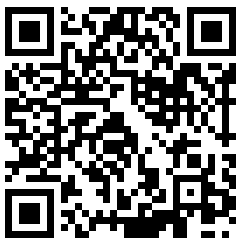کاربست نظریه یو در شهرسازی ایران
چکیده: نظریه یو به دنبال هدایت از محتمل ترین آینده است. یک فعّالیّت میتواند با توجّه به ساختار التفاتی که از آن فعّالیّت خاصی انجام می گیرد به نتایج کاملاً متفاوتی بینجامد. در این مقاله سعی داریم این نظریه که عمر زیادی از آن نمیگذرد و در حوزه شهرسازی که ریشه ای در علوم اجتماعی دارد را مورد واکاوی و چگونگی ورود آن به عرصه شهرسازی ایران را بررسی کنیم. سوالی که به دنبال پاسخ آن هستیم این است که نظریه یو می تواند در عرصه شهرسازی ایران حضور یابد؟ چگونه؟ این سوال به نوعی اساس اصلی مقاله حاضر را شکل میدهد. جهت پژوهش، شیوۀ تفسیری-تبیینی که زیر مجموعۀ روش پژوهش کیفی هستند، استفاده شده است. منابع مورد استفاده در پیشبرد مقاله از طریق انجام مطالعات وسیع کتابخانه ای چه در حوزه نظریه پردازی و چه در حوزه نظریه در باب شهر، حاصل گشته اند. این منابع، سپس بر اساس روش تفسیری-تحلیلی مورد استفاده قرار گرفته است. نتایج بیانگر آن است که، مدیران و شهرداران شهرهای کشور که به عنوان رهبران شهر نیز مطرح میشوند، باید از سطح گرایی، داوری و پیش داوری اقدامات درون شهری پرهیز کرده و آن را متوقف کنند. این رهبران باید به درون نفس خود فرو رفته تا بتوانند نقاط کور رهبری خود را شناسایی کنند و با آشکار سازی این نقاط به رفع آن اقدام نمایند. سپس، با حضوری همراه با حس و ذهن باز، قلب باز و اراده باز به تصمیم گیری و ایجاد تغییرات بنیادی در رهبری دست بزنند.
واژگان کلیدی: نظریه یو، ظهور آینده، نظریه در شهرسازی
Application of U theory in Iranian urbanism
Abstract: U theory seeks guidance from the most probable future. An activity can lead to completely different results depending on the structure of the attention from which a particular activity is performed. In this article, we try to study this theory, which does not last long, and in the field of urban planning, which has its roots in the social sciences, and how it enters the field of urban planning in Iran. The question we are looking for an answer to is whether U theory can be present in the field of urban planning in Iran? How? This question somehow forms the main basis of the present article. For research, the interpretive-explanatory method, which is a subset of qualitative research method, has been used. The resources used in advancing the article have been obtained through extensive library studies, both in the field of theory and in the field of city theory. These sources are then used based on interpretive-analytical method. The results indicate that the managers and mayors of the country's cities, who are also considered as city leaders, should avoid superficiality, arbitration and prejudice within the city and stop it. These leaders must be immersed in themselves so that they can identify the blind spots of their leadership and work to eliminate them by exposing them. Then, with an open-minded, open-hearted and open-minded presence, make decisions and make fundamental changes in leadership.
Keywords: U theory, future emergence, theory in urbanism


